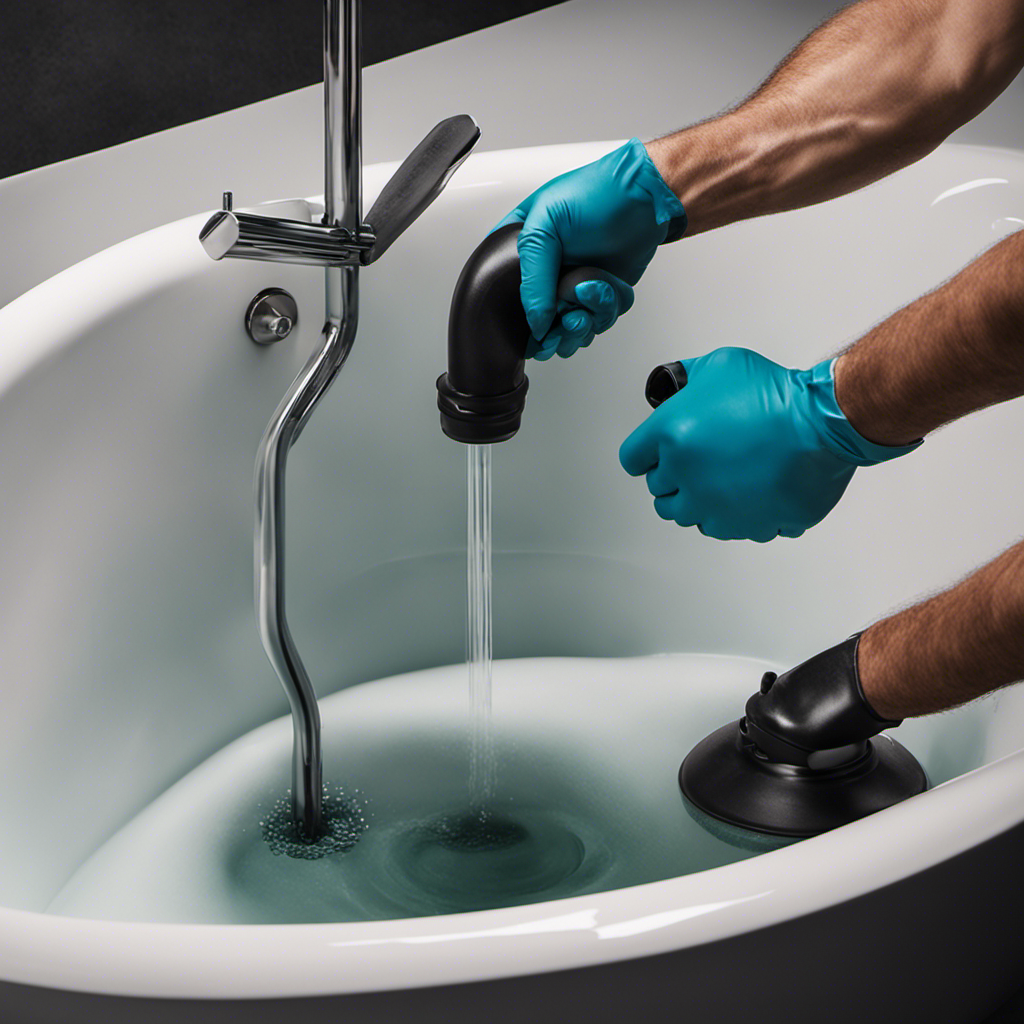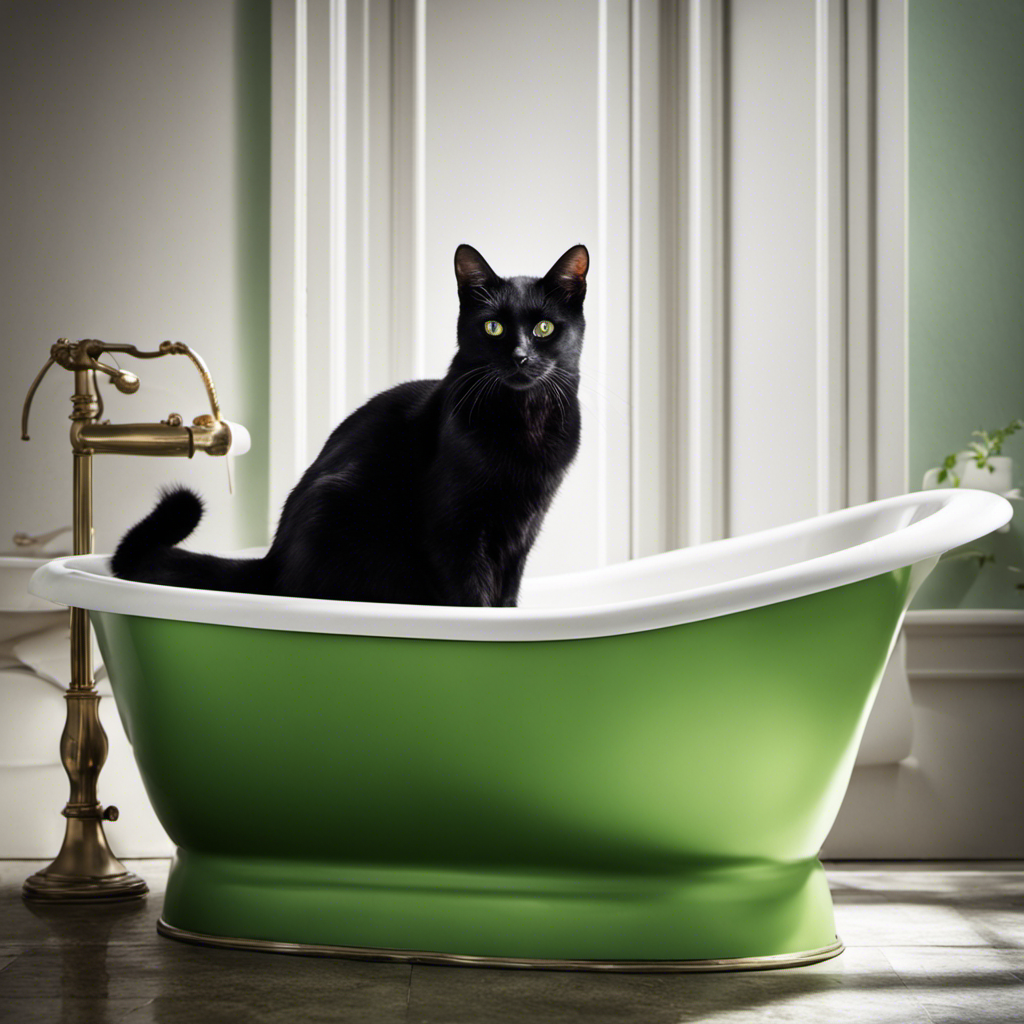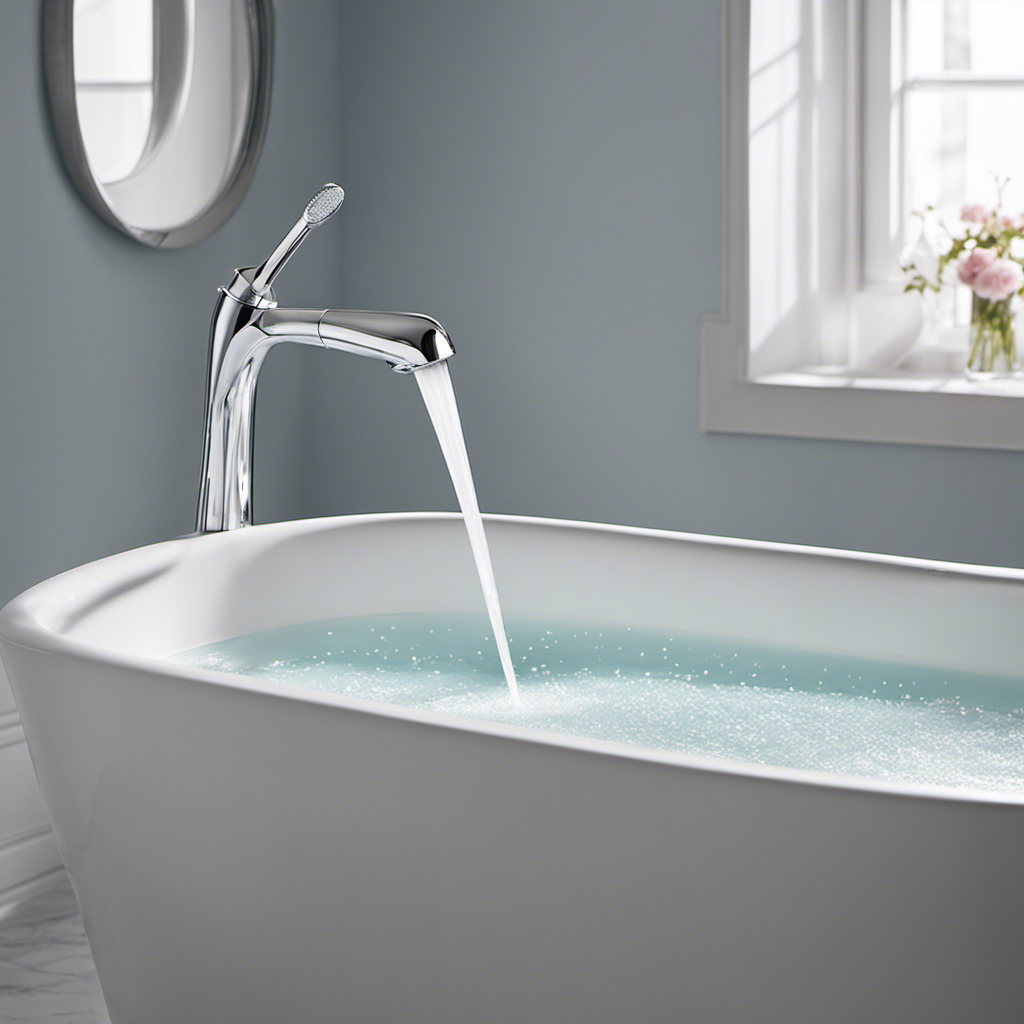As I plunge into the world of bathtub maintenance, I am armed with the knowledge and skills needed to conquer any blockage.
In this guide, I will share my expertise on how to effectively plunge a bathtub, ensuring a smooth and clog-free experience.
With the right tools and techniques, you’ll be able to tackle any stubborn obstruction and restore your bathtub’s optimal functionality.
So let’s dive in and get your bathtub flowing like a tranquil river once again.
Key Takeaways
- Assess the blockage by removing the drain cover and feeling inside the drain with fingers
- Gather the necessary tools such as a plunger with a flat bottom and a drain snake for stubborn clogs
- Prepare the bathtub for plunging by removing excess water and regularly cleaning the bathtub to prevent future blockages
- Use proper plunging techniques by applying firm pressure, maintaining a steady rhythm, and being patient and persistent if the blockage persists
Assessing the Blockage
Now, you’ll need to feel for any objects or debris that may be causing the blockage in your bathtub drain. Start by removing the drain cover and using your fingers to carefully feel inside the drain. Look for any hair, soap scum, or other foreign objects that could be obstructing the flow of water.
If you can’t find anything with your fingers, you may need to use a flashlight to get a better look. Sometimes, the cause of the blockage may not be immediately visible, so it’s important to be thorough in your examination.
Once you have identified the cause, you can proceed to clearing the drain using a plunger or other appropriate methods. Remember to always exercise caution when working with drains to avoid causing further damage.
Gathering the Tools and Equipment
First, you’ll need to grab the necessary tools and equipment for the job. Here are the three items you’ll need:
-
A plunger: Choosing the right plunger is crucial for effectively unclogging your bathtub. Look for a plunger with a flat bottom and a sturdy handle. This design allows for a better seal and more powerful plunging action.
-
Drain snake: Understanding different types of bathtub blockages is essential. Some blockages may require more than just plunging. A drain snake is a flexible tool that can reach deep into the drain to remove stubborn clogs, such as hair or soap scum.
-
Rubber gloves: Protecting your hands is important when dealing with clogged bathtubs. Rubber gloves provide a barrier against any harmful bacteria or chemicals that may be present in the drain.
Preparing the Bathtub for Plunging
To prepare for unclogging, make sure you remove any excess water from the drain. This is crucial because it allows the plunger to create a proper seal and generate enough suction to clear the blockage effectively.
Start by using a cup or a bucket to scoop out any standing water in the bathtub. Once the water level is low or completely drained, you can proceed with the plunging process.
Keep in mind that regular bathtub cleaning can help prevent future blockages. By regularly removing hair and debris from the drain, you can minimize the chances of a clog forming. Additionally, using a drain cover can also help to catch any potential blockage-causing materials before they enter the drain.
Proper Plunging Techniques
Using the plunger correctly is essential for clearing the blockage effectively. Here are three key steps to ensure successful plunging:
-
Position the plunger: Place the rubber cup of the plunger over the drain opening, ensuring a tight seal. This will allow maximum suction to be created.
-
Apply firm pressure: Push down on the plunger forcefully, then pull up quickly. Repeat this motion several times, maintaining a steady rhythm. The pressure created will dislodge the clog and allow the water to flow freely.
-
Repeat if necessary: If the blockage persists, continue plunging until the water starts to drain. Be patient and persistent.
By following these steps, you can effectively clear the blockage and prevent future ones. However, if the problem persists, there are alternative methods and additional tips to troubleshoot the issue further.
Now, let’s explore troubleshooting and additional tips to handle stubborn bathtub blockages.
Troubleshooting and Additional Tips
If the blockage persists after plunging, you may want to try using a drain snake as an alternative method.
A drain snake is a long, flexible tool that can reach deep into the pipes to break up clogs.
It’s important to use the drain snake correctly to avoid causing further damage. One of the most common mistakes people make is using too much force when operating the drain snake.
This can lead to the snake getting stuck or damaging the pipes. To prevent this, it’s important to follow the manufacturer’s instructions and use gentle, steady pressure.
Additionally, it’s important to take safety precautions when using a drain snake. Always wear gloves and eye protection to protect yourself from any debris or splashes.
Remember to be patient and persistent, and don’t hesitate to call a professional if you’re unsure or uncomfortable with using a drain snake.
Conclusion
In conclusion, I hope this guide has helped you learn how to plunge your bathtub effectively. By assessing the blockage and using the proper tools and techniques, you can easily clear any clogs and restore proper drainage.
Remember, regular maintenance and prevention are key to avoiding future issues. Did you know that according to a recent study, 80% of plumbing emergencies are caused by clogged drains? Taking the time to learn how to plunge your bathtub can save you from expensive repairs and inconvenience in the long run.
So, don’t hesitate to tackle those clogs and keep your bathtub running smoothly!










